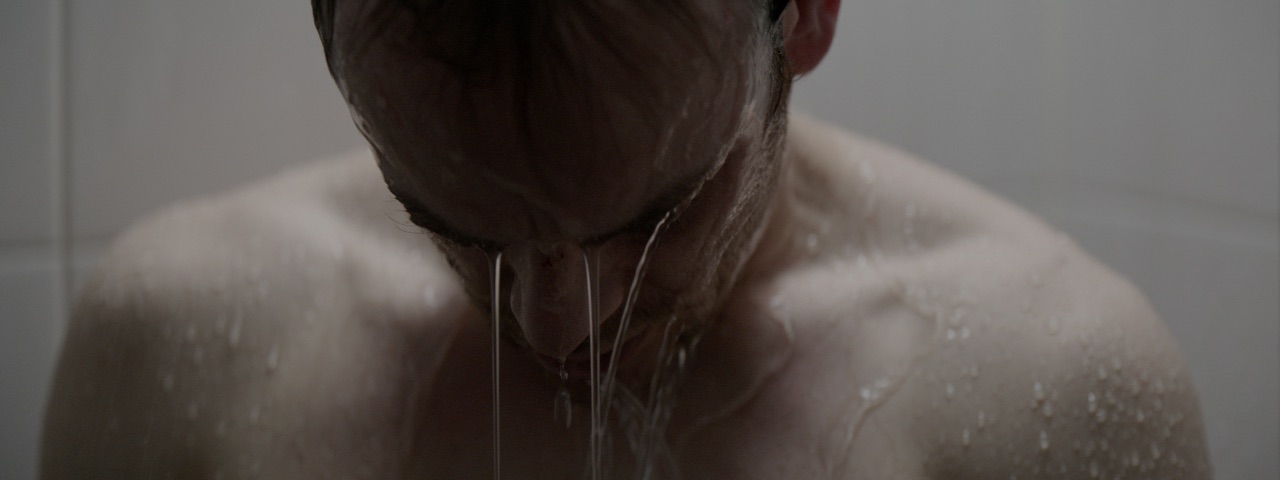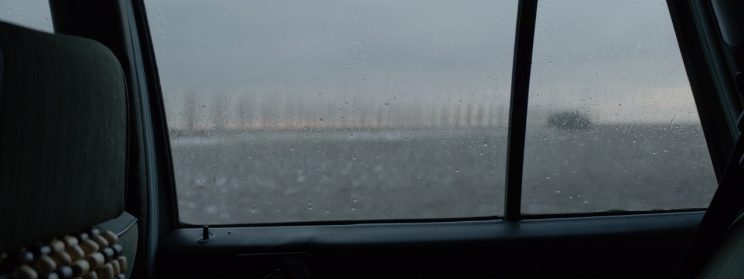Frank van den Eeden about the feature film Waldstille.

Dutch cinematographer Frank van den Eeden (May 14, 1971), resident of Antwerp is best known for his work with directors such as Fien Troch, Nanouk Leopold and Jan Verheyen. Besides many nominations he has won several awards for his work as cinematographer. Most recent he won the Golden Calf for best cinematography for ‘Full Contact’ from director David Verbeek at the Dutch Film Festival in 2016. With this film, he also won the Silver Plaque at the 51st Chicago International Film Festival in 2015. In 2014, he won the Ensor for best cinematography for ‘Het Vonnis’ (The Verdict) from director Jan Verheyen at the Ostend Film Festival. Frank won the same award in 2012 for ‘The Invader’ by Nicolas Provost. One of his later productions is ‘Waldstille’ from writer and director Martijn Maria Smits, a feature film that got its world-premiere during the San Sebastian Film Festival in 2016. The NSC talked with Frank about this film.
‘Waldstille’ is a contemplative filmed drama that leaves you with space for own interpretation. After serving his jail sentence for drunk driving and causing a car accident that kills his girlfriend, Ben (Thomas Ryckewaert) returns to his hometown Waldstille. Here he faces his embittered family in law who got custody over his daughter Cindy (Zinsy de Boer) and prohibit any contact with her. But Ben is determined to make up for the lost time with his daughter.

How did you get involved in this project?
Stiennette Bosklopper of Circe Films had already announced ‘Waldstille’ in 2013. Later, Martijn sent me the script with his written director’s vision on it. Weeks later we met in Antwerp. It clicked and from there on our collaboration started.
What appealed you in the story?
The script of ‘Waldstille’ had this uncomfortable and claustrophobic touch. This is due the strong focus on its main character and the growing tension between him and the arena of the village. The visual translation of this interested me. Also, the attention to small moments in daily life, which allow scenes to have a documentary feeling, appealed to me. But nature also received a lot of attention from Martijn and became almost a character on its own in ‘Waldstille’.

If I am not mistaken, was this your first collaboration with director Martijn Maria Smits? In what way have you come to terms concerning filming style and was this settled before principal photography started?
From the start Martijn had a clear vision for the look of ‘Waldstille’. The work of painter Andrew Wyeth was an important reference for him. Wyeth often shows lonely figures in a vast landscape. Martijn wanted to have the same ‘unheimlich’ (spooky) feeling and color palette as Wyeth’s work for ‘Waldstille’. Within 20 days we read the script and made the decoupage together. We have watched fragments from films, documentaries and music videos. Talked about framing camera positions, movement, light and the rhythm of the scenes. In the same period location scouting started. Finally, there was for each scene a shot list and given preference for the time of day we wanted to film a particular scene.

After his release, Ben has dinner with his parents, composition and light wise this scene has a strong resemblance to Van Gogh’s painting ‘The Potato Eaters’. Was this a deliberate reference?
Ben’s isolation was important in this scene; therefore, he sits in a strong back-light with his back towards the camera. Besides this wide shot there was only one close on Ben within this scene. Combined, those two shots serve to place Ben outside the group. During preparation of the scene we also saw this painting arise, but it was not a reference for us. So pure coincidence.
What was your lighting strategy for this film and which equipment did you use?
The use of natural light was very important for ‘Waldstille’, we were looking for mix of realistic and cinematic universe. We shot in February and March around the countryside of Breda. This region has many open spaces with little urban development, which allowed us to follow the sun from early in the morning until late in the evening. The main strategy was just to be at the right place, at the right time and use available light as much as possible. There was often an early or late call to catch the first sunrays of the day, or to film a scene in twilight.

We had a limited lighting package. Most of the time we eliminated or softened the existing light situation and worked with practicals. We often added an ARRI L7 which brightness and color temperature controls are easy to adjust to the existing situation. Further, there was a small set of (1.2K and 1.8K) HMI lighting figures, some (sodium) streetlights and a set of tungsten Fresnel lamps.
Did you work with a large lighting department? How was the collaboration?
Waldstille is made with a small crew. My gaffer was Uwe Kuijpers and Joop Deden was our Key Grip. It was a smooth collaboration, wherein the various departments complemented each other where needed.
It’s an observative film, shot with a minimum amount of set-ups. Can you tell how the style of camerawork arose?
Martijn wanted a sense of reality without dramatizing with camera movement and lighting.
With focus on small things or silent moments we allowed tranquillity in the film. Take our portraits of character associated objects for example, or nature morte of rooms without characters. ‘Waldstille’ interweaves fiction and documentary by embracing a minimum amount of setups and long takes. This allows the audience to discover a character as a real individual with all its uncertainties and habits.

Which camera and lenses did you use?
We filmed Waldstille on a 4:3 Alexa with ARRI Master Anamorphics. Almost all Martijn’s references were in Cinemascope, so the choice for this format was easy.

You shot some scenes handheld, which is quite uncommon for anamorphic shooting concepts. Did the chosen lenses offer enough comfort for this?
That went fine, they are not extravagant large lenses and combined with an Easyrig it was not a problem at all. Although I must admit that the arrival of the Alexa Mini is a major relief.
What focal lengths did you prefer on this production? How did the choose arise and did you try to maintain a specific aperture?
I believe our workhorses were the 40 and 100mm on this film. We searched for a lens that allowed us to come close to a character without the wide angle feeling. Such a preference for one or two focal lengths occurs during the first days of principal photography. We filmed almost everything on a wide-open aperture to enhance Ben’s isolation.

It must have been a challenging production for your focus puller. Did he use any special tools?
He equipped the camera with a Cine Tape Measure, which is quite a handy tool for certain scenes. Just like allowing imperfect framing was it tolerated to be more intuitive with the focus. This sometimes creates a tension within the frame that’s more interesting than just mechanical following the focus on the actors. I work with Bart Bleuzé as my focus puller for a long time now. He observes the scene and understands why I sometimes need a different focus timing or execution.
Especially in the handheld situations the actors seem to have a lot of freedom of movement. How did this influence the camera-style? Was the mise-en-scene for example set upfront?
I dislike to pinpoint actors between lighting stands. Total freedom of movement also formed an important starting point for some scenes in ‘Waldstille’. We filmed the scene in the classroom or the confrontation between Ben and his father-in-law in long takes in which we captured the whole performance in one run. We discussed in advance what the scene was about. With whom we enter the scene. What the dynamics are, but the final mise-en-scene often arose during the first few takes. We filmed a lot with no rehearsal.

What was the most complicated scene for you to film and how did you handle it?
The most unpredictable scene was Ben’s fight we filmed during an existing carnival party. Communication was difficult due to the loud music. We had little control over the large group of drinking partygoers, from which not everyone realized that it was a staged fight. To film everything we kept ourselves low profile in the crowd. We only had a small LED-panel for fill and shot the whole sequence handheld.
Where did you film and how did the schedule look like?
We had 28 days for principal photography. Most locations were in Noord-Brabant, near Breda.
How did you determine the exposure of the digital negative on set?
I used the viewfinder and sometimes looked at Log-C on a monitor. In rare occasions, I evaluate the image via a waveform and never use false color.
Did you use a special LUT on set?
I used the default in-camera REC709.
Did the film need a lot of attention during color grading? How was the collaboration with your colorist and post-production?
We did the grading in 10 days at Filmmore Amsterdam. It was my first collaboration with Fernando Rodrigues. Everything went well.
Interview by Vincent Visser & NSC
English Translation by Herman Verschuur & Vincent Visser
